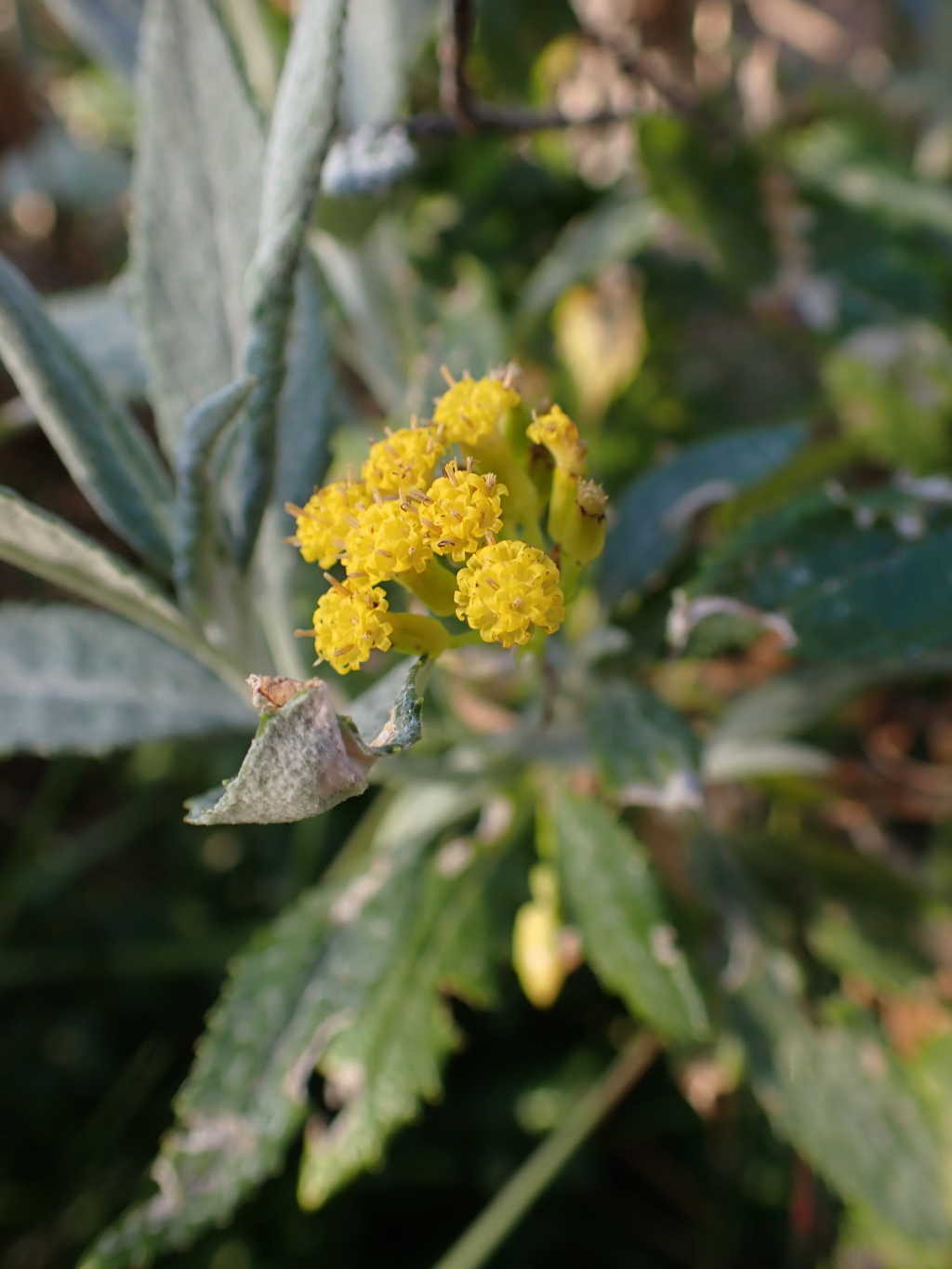Senecio hypoleucus
F.Muell. ex Benth.Erect subshrub to c. 1 m high, young stems densely white-cobwebbed sometimes becoming glabrous. Leaves petiolate, not auriculate, ovate to lanceolate, 5–15 cm long, 1–8 cm wide, dentate to biserrate; upper surface finally glabrous (or retaining a few cobwebbed hairs around veins); lower surface densely white-cobwebbed; petiole to 4 cm long. Inflorescence corymbose, typically 2–6 cm across, with c. 20–300 capitula arranged in dense clusters; capitula non-radiate; involucre cylindric, 4.5–6 mm long, glabrous; bracts 7–10; bracteoles few, not crowded; florets 10–14, all bisexual. Cypselas cylindric or narrow-fusiform, 1.7–2.2 mm long, brown, broadly ribbed, papillose-hairy in intervening grooves; pappus of slender hairs c. 4 mm long, deciduous. Flowers mostly Nov.–Mar
LoM, Wim, OtP, GGr, DunT. Also SA. In Victoria confined to Mt Arapiles, Mitre Rock and the Black Range, usually growing in shallow soil amongst rock.
Walsh, N.G. (1999). Senecio. In: Walsh, N.G.; Entwisle, T.J., Flora of Victoria Vol. 4, Cornaceae to Asteraceae, pp. 941–965. Inkata Press, Melbourne.
 Spinning
Spinning


